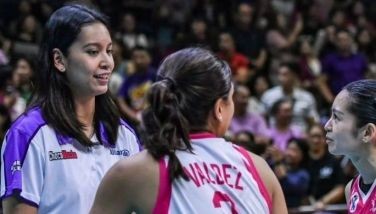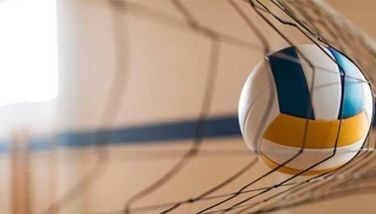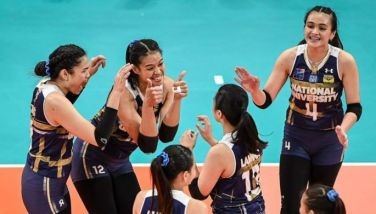What do we really want?
What do we really want for ourselves as a sporting nation? This weekend of reflection should give us an opportunity to think about which sports we want as spectators, as players, and as citizens. While it’s true that some sports in the country have grown in terms of spectatorship and advertising support (football, women’s volleyball and a handful of others), given the challenges of maintaining a consistent budget for sports and the varying degrees of support each sport will get from the government in a particular year, maybe we should narrow our focus to a few that will truly bring us attention and success on the international stage.
I know this may sound like we’re beating a dead horse that is trotted out every time we’re about to regurgitate our need for a more focused sports development program, but the problem is that there may not really be enough for everybody. As some government officials (and a few candidates for elective position) have pointed out, we may need to realign a portion of our national budget for disaster preparedness, add to our miniscule allocation for education, and boost our infrastructure programs. Roads, hospitals, schools and airports, after all, usually get priority when there is no loud argument for beefing up the armed forces. As usual, sports is left looking for scraps. This column has already discussed how difficult the situation is for a government sports agency like the Philippine Sports Commission to not have any real teeth in terms of budget. We don’t give enough, but expect full results. We treat sports like a day of bargain-basement Christmas shopping in Divisoria. And our athletes feel like they’re in a game of Kris Kringle that they never volunteered for.
Of course, there’s the old saw that a contingent of 12 boxers could bring home a potential 12 gold medals, whereas a team of 12 basketball players would pretty much have a shot at... one. And boxers would be cheaper to feed, train and send to competitions, at least on paper. The reality, though, is that it is now virtually impossible to qualify that many boxers, given the standard of competition, the room carved out for female boxers, and the gradual fusion of amateur and professional rules. In other words, it’s simply too tight to place that many boxers in the first place. Again, the same goes for most sports. Luckily for basketball, it has for almost a century been the most loved sport in the archipelago. It has everything we impatient Filipino fans love: there are star players to idolize, it scores at a fast pace, and it’s American. It’s a larger version of all those American coffee shops: you pay a lot for a quick high from a proven US formula.
There are those who would argue for water sports, due to the archipelagic landscape of the country. We have the largest coastline in the world, therefore, we should have the most and arguably the best swimmers on the planet, right? The Philippine Sports Commission, then under Dr. Aparicio Mequi, was planning to convert the Narciso Ramos Sports Complex off the coast of Lingayen in Pangasinan into an aquatic sports training and research center, following this philosophy. When you think about it, that would provide conceivably the most cost-efficient athlete to medal ratio in international competition. Following this line of thinking, we should have been able to produce a dozen or so Mark Spitzes or Michael Phelps clones since then. But be that as it may, we aren’t producing anywhere near that number or level of swimmers, divers and so on.
Others would argue for the part of athletics. After all, you’re just competing with what God gave you, no more, no less. Carl Lewis once held the record for most Olympic gold medals with nine (along with Spitz). Even at an advanced age, Lewis was fit enough to anchor a relay team in the Olympic games and bring home a record-tying gold medal then. One athlete can bring home several medals in several events. In the sprints alone, you could be good for at least four to six (100 meters, 200 meters, 400 meters, relays). In the middle distances, probably three or four golds. So on a cost per athlete, it would be much better for the country to allocate its resources that way, wouldn’t it?
What’s starting to affect the youth who start out wanting a life in sports is the reality of it all. Like the children of farmers who would rather be call center agents or real estate brokers, they ask where the money is. A cursory look at where all the moneys are supposed to come from reveal that salaries, allowances and other compensations for officials down to athletes were first shaped by laws which were first enforced in the 1970’s and updated roughly 10 to 20 years ago. Realistically, why would a young person dedicate the best decade or so of his or her life knowing they would not earn enough to support their elderly parents or start a family? That would seem to begin a downward spiral. You don’t earn enough, so you scrimp on your nutrition so you could pursue your passion and still have something to send home. But on the other hand, you’re undercutting yourself as an athlete, and increasing the likelihood that you’ll get injured, as well. Then you have to force yourself to recover more quickly so you can compete and have a shot at all those incentives national athletes get. From the outset, you’re already compromised. Not a rosy picture.
There’s also the problem of politics in sports. Consider that the next Chief Executive will have to appoint over 55,000 people into office. It may be unlikely that he (or she) would know that many to begin with, and with political horse-trading the way it is, it may not really have any say over who goes where. The PSC might be a place where a friend of a friend or an ally of an ally may be given a position. Hence, they wouldn’t be the most qualified person to begin with. On top of that, you have a very short shelf life. You may be here today, gone tomorrow. The country would really be best served if we decided once and for all whether or not our sports development and elite athletes should be entirely under the government or under the private sector. This hybrid formula merely adds an unwanted layer of bureaucracy and political tug-of-war.
This is something that the next administration should study carefully. Granted we are spending a fortune on sports, and we’re not even talking pro sports. There is money to be made to sustain sports, if it is done wisely and as a unified team. But by the time the election comes, this issue of the newspaper may have been just become part of a pile for recycling, along with all the ideas in it.
- Latest
- Trending






























